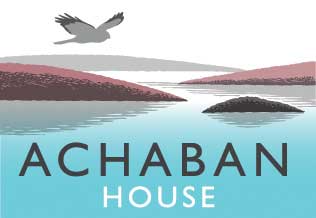


April 12, 2020
A recent walk to nearby Fidden beach resulted in a rare find for us! This was the egg case of a ‘Flapper Skate,’ until fairly recently known as the ‘common skate’ owing to its historic abundance. It is the largest skate species in the world, reaching up to 285cm in length, with the egg capsule itself measuring up to 28cm. 'Why not take part in the ‘Great Eggcase Hunt the next time you visit a beach and identify the species of any egg cases that you find?
UK waters provide a home to at least 16 different skates and rays – the flatter relatives of sharks, of which we have around 30. Although roughly a quarter of all sharks worldwide are egg layers, only a handful of our British species are known to do this. All species of skates lay eggs and in fact this is one of the features that distinguishes them from stingrays, who give birth to live young. Skates also do not have a sting, but their shorter stubbier tail can be used in communication via electrical signals that are unique to each species, which may enable them to recognise mates. The different species of skates and sharks can be identified by their egg cases.
Since our waters are quite chilly, juvenile skates and sharks may take up to 12 months to hatch, depending on the species. For this reason, the embryo is protected by a tough leathery egg capsule, inside which the young fish develops from a yolk sac until it is a miniature version of its parents. Sharks egg cases often have long tendrils (like old fashioned curly telephone wires) that attach them to seaweed holdfasts, which provide camouflage as well as an anchor. Skates on the other hand look like square pillows, often with long horns in the corners. These horns are actually tubes through which fresh seawater is pumped by the embryo to provide it with sufficient oxygen during development. Skate eggs are weighed down on the sea bed by sand and gravel which attaches to a sticky mucous that surrounds the freshly laid capsule. After the juvenile sharks and rays hatch their eggs become lighter and start to be moved by ocean currents and tides. At this point they are often washed up on our beaches, where you might be lucky enough to find one nestled among other debris in the strandline – this is where we found our flapper skate egg case during our walk at Fidden.
Due to their large size and the fact that they take over a decade to reach sexual maturity, these skates are extremely vulnerable to overfishing which has led to their range being much reduced to the point that they are now considered Critically Endangered. Their conservation status has been further complicated by the fact that it was only recently discovered that the fish previously known as the ‘common skate’ actually represents two species – the larger Flapper Skate (which laid our egg case) and smaller ‘Blue Skate’ – meaning they are both fewer in number than previously estimated!
Strongholds of our Flapper Skate remain along the northwest coasts of Scotland as well as Orkney and Shetland and for that reason, much of their habitat between Loch Sunart and the Sound of Jura (including some of the waters around the Isle of Mull) is managed as a Marine Protected Area. Although they are now afforded some protection – it is illegal to land them - it remains important to monitor their distribution and in particular where they breed.
Finding egg cases on beaches could therefore provide useful information about the breeding habits of these species. The Shark Trust have been running a project called the ‘Great Eggcase Hunt’ since 2003, with the aim of getting as many people as possible out hunting for egg cases and recording their finds. Therefore, the next time you go to a beach, have a closer look at the strandline, because what you’re looking at, might not just be seaweed. You might help to piece together the story how sharks and skates breed in our waters and contribute much needed information to assist with their conservation.
View examples of egg cases you can find on beaches in the UK, on the photograph below. From left to right: small spotted catshark, cuckoo ray, spotted ray, thornback ray, small-eyed ray, flapper skate (Fidden Beach), flapper skate (Orkney), note that 'ray' is used as a common name for some of these species, but technically they are all skates.